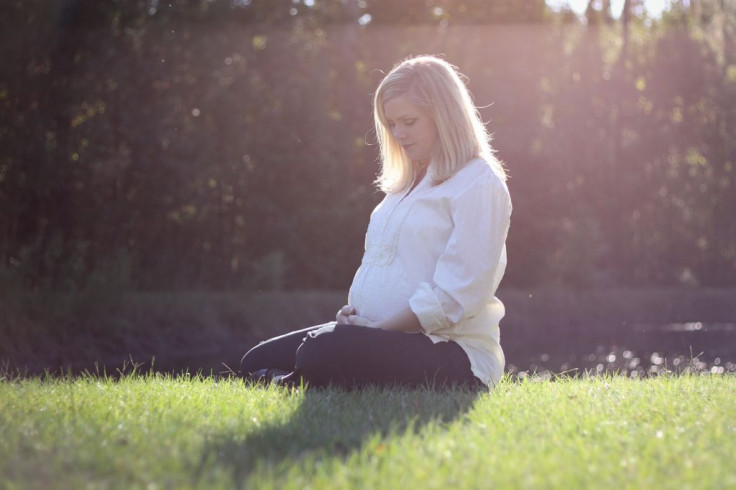Mental health: depression and anxiety in young mothers is up by 50% in a generation

Back when it first started, 17% of young pregnant women in the Children of the 90s study reported symptoms severe enough to indicate clinical levels of depression. This figure was already worryingly high in the 1990s, but in their daughters’ generation it is even more common: 25% of the second generation of the study – women under the age of 24 who are becoming pregnant now – are reporting signs of depression and anxiety.
Children of the 90s started following the mental and physical health of families in the UK in the 1990s. The young mothers who responded were not reporting that they had depression or were seeking help. Rather, the women answered questions anonymously about how they had been feeling over the previous two weeks. The questions were never changed, so that women responding in the 1990s answered the same questions about their lives as their daughter’s generation in the 2010s. This means that many of the women who took part will have had clinical depression or anxiety without actually recognising it as such.
In a study published in The Lancet, colleagues and I suggested too that far too many young women are suffering. And there are also implications for the unborn baby.
How antenatal depression affects babies
We know that depression and anxiety in mothers can have an influence on their child at any point in the child’s life. Arguably, however, antenatal depression – which occurs during pregnancy – is the period of greatest risk to the child.
While pregnant, the stress hormones and other physiological consequences of depression and anxiety that circulate in the mother’s system are also picked up by the developing foetus, through the placenta and in the womb. This can alter the way a baby’s stress system develops.
Depression during and after pregnancy comes at a critical time for the baby. It can make it more difficult for the mother to interact with her baby, especially during times when the infant is distressed. Depressed ways of thinking and behaving may get picked up by the child in an ongoing cycle of learnt behaviour.
What’s behind the increase?
It’s very difficult to prove what may have led to an increase in young pregnant women feeling this way. However, when trying to understand rises in anxiety and depression we can look to what has changed across the generations.
It’s possible that this new generation of pregnant women are more comfortable talking about their emotions and better able to answer the questions accurately. In this case, it doesn’t negate the fact that 25% of young pregnant women today are depressed, but it may suggest that in the 1990s it was similarly high but women were less able or willing to express it.
However, there have been two key changes in the living standards of young mothers in the last three decades that could have caused a genuine increase in depression.
There has been a substantial increase in working motherhood since the 1990s, with more young women reaching higher levels of education and wanting a career. The increasing cost of living and soaring house prices mean that there is little choice for most and two incomes from a woman and her partner is the norm. The physical burden of working while pregnant, the financial pressures of often uncertain maternity pay, and the psychological impact of expecting the perfect career and family are all likely to have taken their toll. Partners also play a vital role in sharing this burden and can also need support.
The generation entering motherhood now will have also been the first to grow up alongside social media. When Facebook launched in 2004, the children born at the start of the study were in their early teens. This generation of young mothers will have been inundated with more information and social comparisons as they enter their first pregnancy, and it has been suggested that the potential stigma and social isolation of being a young pregnant mum may be exacerbated by social media.
Tackling antenatal depression
It’s important that research like this isn’t used to blame mothers, and increase the already burdensome guilt attached to motherhood. It should instead be used to support families that need help. There is growing evidence that suggests the risks to the child from antenatal depression are not inevitable and can be buffered by positive environments and supportive families and communities.
Antenatal depression is routinely screened for by midwives, as recommended by national guidelines. However, in most areas, nowhere near as many women who indicate high levels of symptoms in these types of surveys actually come forward to get help from midwives or GPs.
This may be because women don’t identify with the label of depression. The symptoms which were driving the increase in poor mental health in our study were reported feelings of fear and being overwhelmed. Currently, guidelines suggest that midwives should consider asking about anxiety as an optional suggestion, but our study found that this may be very important to ask. Discussions around emotions or whatever women feel comfortable with, rather than terms like depression, could help more women come forward.
However, the issue remains that if depression and anxiety is more common among young mothers, it’s likely that there are a lot more women out there to support than specialist services can cope with. There are just not enough resources.
As well as more funding for such services, there needs to be support within the community. Perhaps it is also time to talk about how modern life might need to change to support young women, before this rise in antenatal depression takes its toll on the next generation too.
Rebecca Pearson, Lecturer in Psychiatric Epidemiology, University of Bristol
This article was originally published on The Conversation. Read the original article.





















